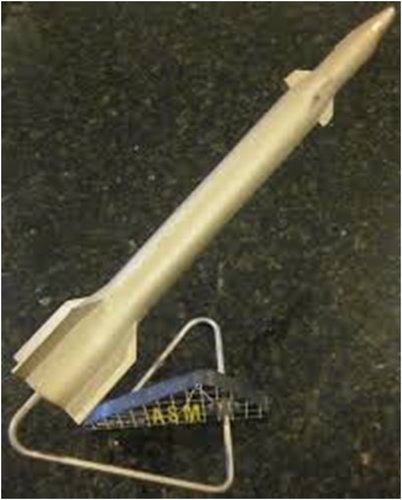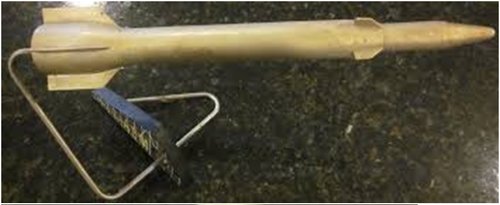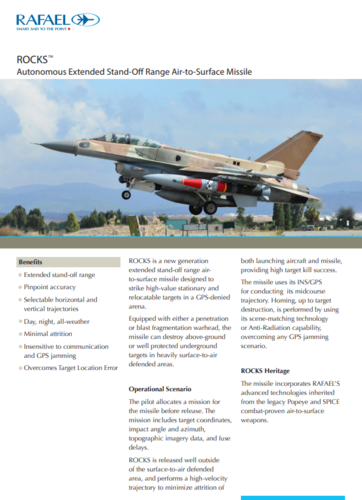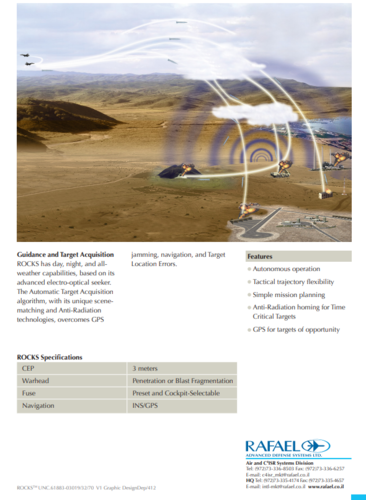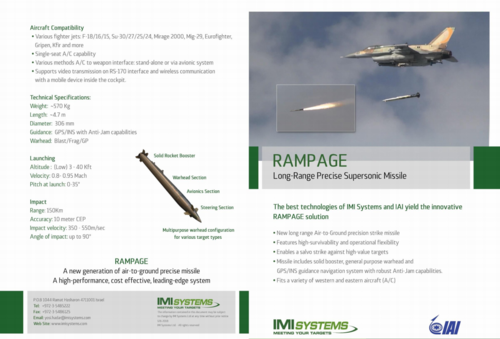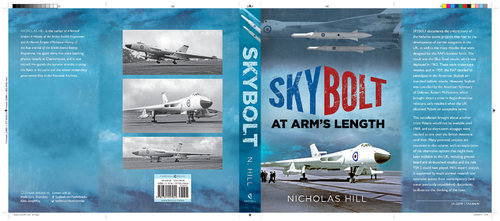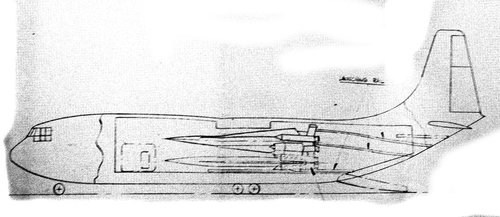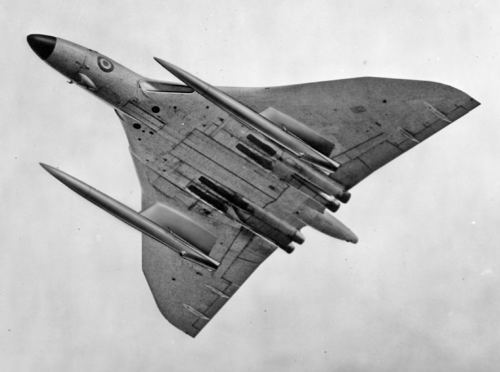Most likely to reduce drag while it's being carried.CNH said:why are there all those fairings around the missile?
You are using an out of date browser. It may not display this or other websites correctly.
You should upgrade or use an alternative browser.
You should upgrade or use an alternative browser.
ALBM Projects (was: Er, Skybolt, the missile...)
- Thread starter Skybolt
- Start date
martinbayer
ACCESS: Top Secret
- Joined
- 6 January 2009
- Messages
- 3,397
- Reaction score
- 3,906
gtg947h said:Most likely to reduce drag while it's being carried.CNH said:why are there all those fairings around the missile?
My guess is that the actual question was why there are eight separate fairing parts when (taking the apparently protruding cruciform fin arrangement into account) four fairing segments might have been completely sufficient (and resulted in fewer potential separation failure points and some weight savings as well).
Martin
- Joined
- 1 May 2007
- Messages
- 2,595
- Reaction score
- 1,965
Hobbes said:Or the question is why fairings along the entire rocket body, and not just on the nose and tail.
Thermal protection?
The carrier aircraft is supersonic, so the missile is going to get 'warm'. By putting the thermal insulation on jettisonable fairings, the missile itself is not encumbered with the added weight. Likewise, the carrier aircraft doesn't need to carry an active thermal control system for the missile...
cheers,
Robin.
- Joined
- 26 May 2011
- Messages
- 2,318
- Reaction score
- 3,472
Didn't the USAF plan to fit Skybolt to the B-58B?
Wouldn't those heat up?
Were they planned to have heat shields?
If Skybolt did heat up when carried externally on a supersonic aircraft, I wonder if that explains the internal carriage on the HS.1011 deterrent carrier?
Would the carrier aircraft (in this discussion the Minerva) be stooging around at subsonic speed poffler-style, then accelerate to launch point?
Would that dash to launch point heat the missile enough to require a heat shield?
Or would the Minerva be on QRA and fly supersonically to its launch point? Wasn't this how the Mirage IV operated?
That long supersonic flight probably would need some thermal protection.
Reminds me of Blue Steel and its four climates.
This could turn into an interesting discussion.
Chris
Wouldn't those heat up?
Were they planned to have heat shields?
If Skybolt did heat up when carried externally on a supersonic aircraft, I wonder if that explains the internal carriage on the HS.1011 deterrent carrier?
Would the carrier aircraft (in this discussion the Minerva) be stooging around at subsonic speed poffler-style, then accelerate to launch point?
Would that dash to launch point heat the missile enough to require a heat shield?
Or would the Minerva be on QRA and fly supersonically to its launch point? Wasn't this how the Mirage IV operated?
That long supersonic flight probably would need some thermal protection.
Reminds me of Blue Steel and its four climates.
This could turn into an interesting discussion.
Chris
- Joined
- 1 May 2007
- Messages
- 2,595
- Reaction score
- 1,965
I have to say that I have no idea of the mission profile of the Minerva (at least until the book comes out), but from the illustration, it doesn't appear to have the endurance for 'poffling'.
Regarding Skybolt on B-58B, take a look at the PDF presented in reply#31, upthread. It shows the design of the B-52 Skybolt pylon, and there, you'll find a 'Thermo-regulation Unit', to cool the missiles guidance system. So Skybolts were to be actively cooled during airborne carriage.
cheers,
Robin.
Regarding Skybolt on B-58B, take a look at the PDF presented in reply#31, upthread. It shows the design of the B-52 Skybolt pylon, and there, you'll find a 'Thermo-regulation Unit', to cool the missiles guidance system. So Skybolts were to be actively cooled during airborne carriage.
cheers,
Robin.
- Joined
- 9 October 2009
- Messages
- 21,975
- Reaction score
- 13,634
XP67_Moonbat said:So I'm almost at the end of Trimble's STRIKE FROM THE SEA. I came upon a reference to BuAer concepts thrown out toward the end of the Seamaster's career meant to show its' versatility.
In May 1957, BuAer proposed launching Regulus II missiles piggyback off the P6M-2 Seamaster. In January 1958, BuAer proposed a 14,000lb, 2-stagehypersonic boost-glide missile with 1000mi to be carried internally. range. That following Feb, it was also proposed to launch Corvus missiles from the mine bay.
It's the Regulus and BGV concepts that have my attention. Anyone else hear of either of these projects?
The book's cites The BuAer documenst Technical Feasibility and Operational Analysis of P6M-Regulus II Weapon System and A Preliminary Design Study Of an Air-To-Surface, Boost-Glide Missile System for the P6M Aircraft as a references.
- Joined
- 3 June 2006
- Messages
- 3,094
- Reaction score
- 3,964
PDF:Ron Downey said:History of the GAM-87 Skybolt Missile
History of the GAM-87 Skybolt Air to Surface Ballistic Missile from the Air Force Systems Command (AFSC) Historical Publication Series, No. 67-50-I. Written by Charles G. Worman and dated March 1967. This was a Douglas missile.
Click here to download history (13.2 Megs).
Alternate download here.
Source: http://aviationarchives.blogspot.com/2017/11/history-of-gam-87-skybolt-missile.html
FighterJock
ACCESS: Above Top Secret
- Joined
- 29 October 2007
- Messages
- 5,607
- Reaction score
- 5,937
The Soviets had an ALBM project called the Krechet designed to be launched from a Tu-160
Interesting, I wonder if there is any information/pictures still around about the Krechet missile.[/QUOTE]
Last edited by a moderator:
- Joined
- 1 April 2006
- Messages
- 11,394
- Reaction score
- 10,297
Ту-160К («Кречет»)
ÐÑÐ¾ÐµÐºÑ Ð°Ð²Ð¸Ð°Ñионно-ÑакеÑного комплекÑа ТÑ-160Ð («ÐÑеÑеÑ»)
jsport
what do you know about surfing Major? you're from-
- Joined
- 27 July 2011
- Messages
- 7,732
- Reaction score
- 5,751
Attachments
The Chinese are apparently building a bomber launched ballistic missile. I had seen some bad drawings of this online and assumed it was fan boi generated material, but there have been recent photo releases of a 'H-6N' version that looks to pretty clearly have a recessed area with attachment points for ballistic missile carriage. The nomenclature for the missile is not known but it is said to be a lightened version of DF-21, presumably with the same warhead options.

 www.thedrive.com
www.thedrive.com

New Photos Point To Chinese Bomber Being Able To Carry Huge Anti-Ship Ballistic Missiles
The H-6N missile carrier adds another long-range and very unpredictable layer to China's already formidable anti-access umbrella.
jsport
what do you know about surfing Major? you're from-
- Joined
- 27 July 2011
- Messages
- 7,732
- Reaction score
- 5,751
looks like a Assault Breaker, Warbreaker tech
Rampage is a modify rocket artillerylooks like a Assault Breaker, Warbreaker tech
Rocks is a modify SCUDs decoy
- Joined
- 27 December 2005
- Messages
- 17,748
- Reaction score
- 26,421
That looks very interesting.
- Joined
- 3 June 2011
- Messages
- 18,337
- Reaction score
- 12,239
It is unbelievable, what the Chinese have done of the plain old Tu-16 Badger. A tribute to the goodness of that aircraft design. Tupolev was an ar$e, but he knew how to design fine aircraft.
and should be bought for new DARPA Warbreaker
Better to build our own. It wouldn't be difficult. ATACMS or Zombie for example.
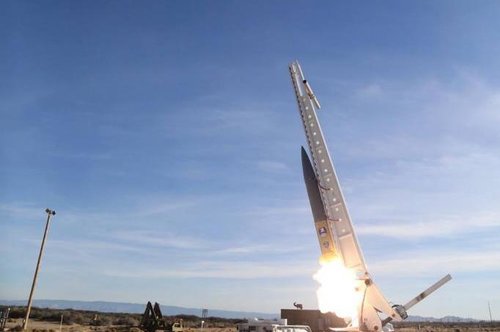
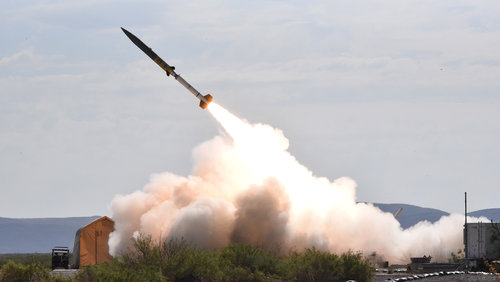
Forest Green
ACCESS: Above Top Secret
- Joined
- 11 June 2019
- Messages
- 9,527
- Reaction score
- 17,466
Could you hang an upgraded Pershing II under the wing of a B-52?
Could you hang an upgraded Pershing II under the wing of a B-52?
Maybe but just to point out the W85 (https://en.wikipedia.org/wiki/W85) of the Pershing came in at 880lbs and the Pegasus (https://en.wikipedia.org/wiki/Pegasus_(rocket)) can put 997lbs into LEO so...
Randy
- Joined
- 21 April 2009
- Messages
- 13,756
- Reaction score
- 7,696
Speaking “same missile” LEO and surface to surface is there a basic rule of thumb for payload comparison?Could you hang an upgraded Pershing II under the wing of a B-52?
Maybe but just to point out the W85 (https://en.wikipedia.org/wiki/W85) of the Pershing came in at 880lbs and the Pegasus (https://en.wikipedia.org/wiki/Pegasus_(rocket)) can put 997lbs into LEO so...
Randy
I think an SS-18 has a ballistic throw weight of 8800kg but puts less than 2000kg into LEO.
I ask cause ATK proposed an all solid Antares with a 25k lbs LEO and was curious if used as a CPGS missile would its payload exceed 75k lbs +
Speaking “same missile” LEO and surface to surface is there a basic rule of thumb for payload comparison?
I think an SS-18 has a ballistic throw weight of 8800kg but puts less than 2000kg into LEO.
I ask cause ATK proposed an all solid Antares with a 25k lbs LEO and was curious if used as a CPGS missile would its payload exceed 75k lbs +
A basic "rule-of-thumb" is probably out there but I just 'SWAG-ed' it really
Like the majority of CPGS concepts though it has the major issue of how does anyone else tell it's NOT a nuclear payload since telling people you're going to launch it is a bit of an issue and NOT telling people you're launching it is a MAJOR issue. I should probably add this applies to an ALBM as well.
Randy
Forest Green
ACCESS: Above Top Secret
- Joined
- 11 June 2019
- Messages
- 9,527
- Reaction score
- 17,466
Forest Green
ACCESS: Above Top Secret
- Joined
- 11 June 2019
- Messages
- 9,527
- Reaction score
- 17,466
Was the X12 based on the Bloodhound?
- Joined
- 26 January 2011
- Messages
- 2,226
- Reaction score
- 645
Why would they need boosters when you have the added velocity of the aircraft carrying the missile? Boosters were required on the ground, well 'cause the missile was launched from a standing start, not near Mach 1.
- Joined
- 5 May 2007
- Messages
- 1,483
- Reaction score
- 2,859
Depends on the ramjet performance characteristics; ramjet thrust increases with increasing speed, so the smallest possible ramjet would need boosting to a fairly high speed before it generated enough thrust to overcome drag. Even if it could provide enough thrust, it may have been inefficient, meaning that boosters gave better performance despite the increased weight and drag.Why would they need boosters when you have the added velocity of the aircraft carrying the missile? Boosters were required on the ground, well 'cause the missile was launched from a standing start, not near Mach 1.
- Joined
- 9 October 2009
- Messages
- 21,975
- Reaction score
- 13,634
McDonnell Alpha Draco Missile–30th Year Reunion
A decent xerox of the Alpha Draco Missile – 30th Year Reunion Notes. Lots of info on this little known project. Credit: L.M. “Roy” Reitter ...
luritie
I really should change my personal text
- Joined
- 13 June 2013
- Messages
- 71
- Reaction score
- 179
I can't think of an operational ramjet that doesn't use a solid rocket booster or super sonic carrier aircraft.Depends on the ramjet performance characteristics; ramjet thrust increases with increasing speed, so the smallest possible ramjet would need boosting to a fairly high speed before it generated enough thrust to overcome drag. Even if it could provide enough thrust, it may have been inefficient, meaning that boosters gave better performance despite the increased weight and drag.Why would they need boosters when you have the added velocity of the aircraft carrying the missile? Boosters were required on the ground, well 'cause the missile was launched from a standing start, not near Mach 1.
The booster can be internal, yes. I think the SA-6 pioneered that technology? The booster is inside what becomes the ramjet combustion chamber.Don't some air-launched ramjet missiles have internal 'booster' portion ??
Although it just occurred to me I'm not familiar with how solid fueled ramjets like Meteor work. I assume there is a solid rocket fuel booster to get it up to speed before the air breathing portion kicks in?
Similar threads
-
-
US Air Force and Navy Ballistic Missile Re-Entry Vehicles
- Started by Yellow Palace
- Replies: 3
-
The Development of Ballistic Missiles in the United States Air Force, 1945-1960
- Started by overscan (PaulMM)
- Replies: 1
-
ORCA Missile System / Project Sunrise - Containerized Seafloor-based ICBM
- Started by Boxman
- Replies: 21
-

